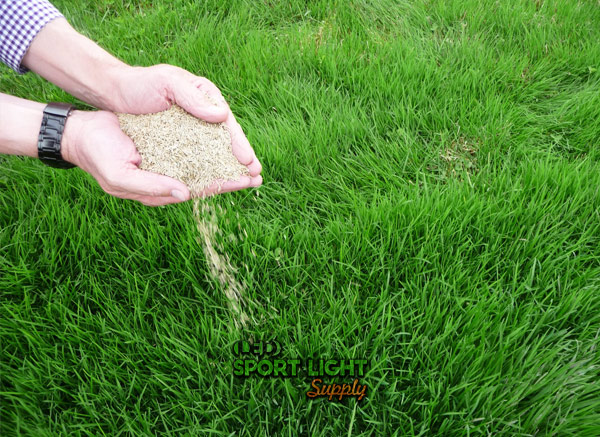
Managing a soccer or football field can be challenging without the right soil and grass seed. The selection of appropriate grass seed is crucial, as it affects factors like wear resistance and drainage. In the USA, Kentucky bluegrass is often the top choice. For soccer fields, a blend of 65% Kentucky bluegrass and 35% ryegrass is effective. However, if your football stadium is located in the South, Tall fescue may be a better option. Let’s explore in more detail how to choose the best grass seed for your sports field.
Table of Contents
TogglePreparation Before Seeding a Soccer Field
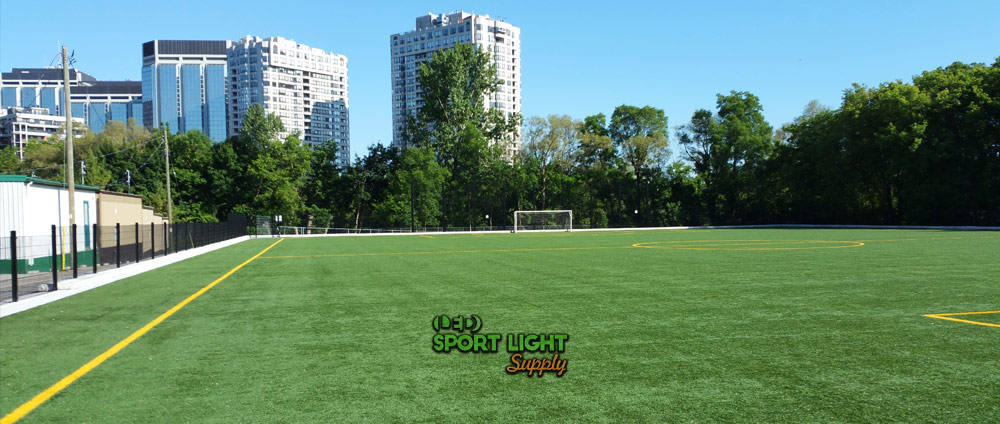
Soil Preparation
For optimal results, start by applying high-quality soil across the entire playing area. It’s essential to create a 2% slope from the imaginary center line—running from goal to goal—toward both sidelines. This slope is crucial for proper surface drainage, as a perfectly flat field can lead to water pooling and increased maintenance costs. A well-drained field ensures fewer interruptions during matches and reduces overall upkeep.
Soil Settlement and Final Grading
Allow the soil to settle before proceeding with the final grading. This waiting period is important as it helps the soil to compact and provides a more stable base for the grass seed. In the meantime, select the appropriate grass seed variety based on your field’s specific conditions. Conduct a soil test to address any nutrient deficiencies and gather information about the sunlight exposure the field receives daily. The geographical location will also influence the choice of grass species.
Grass Seed Selection
While the soil settles, determine which grass seed variety will be best suited for your soccer field. Consider factors such as sunlight, soil conditions, and regional climate. For example, certain grass types may thrive better in specific geographic locations or under particular sunlight conditions.
Timing and Seeding
Transforming a soccer field into a lush, green playing surface can take up to five weeks. Therefore, it is advisable to start seeding by mid-August to account for the construction time and ensure the grass has ample opportunity to establish itself before the season begins.
Selecting the Best Grass Seed for Soccer Fields
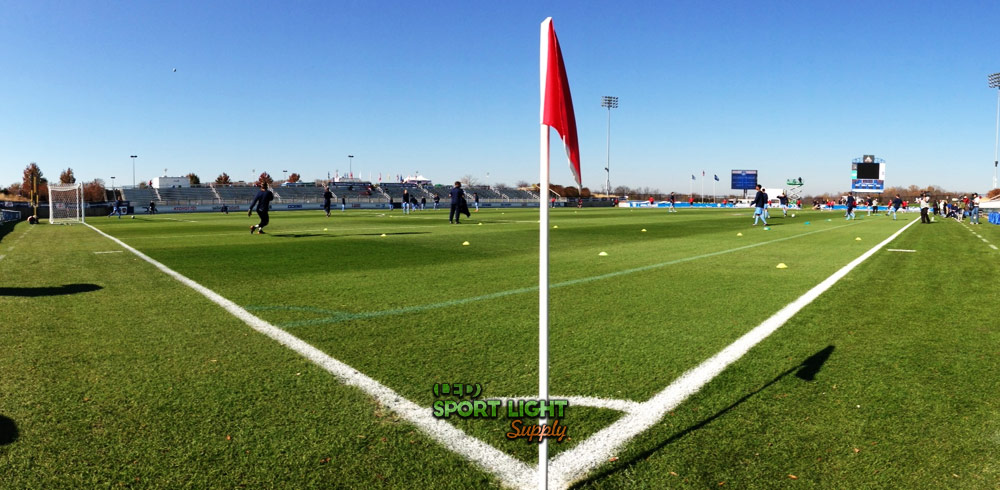
Choosing the Right Grass Seed
For a resilient, natural turf, Kentucky bluegrass and ryegrass are excellent choices. Over time, you may need to adjust your grass species or variety to address issues such as weeds and bare spots. Opting for organic methods does not compromise playability; in fact, natural grass often enhances the soccer experience.
Maintaining optimal turf conditions through regular aeration and fertilization is crucial. Aerate the pitch three to four times a year to ensure strong turf that can outcompete annual weeds.
Best Grass Seed for Northern Regions
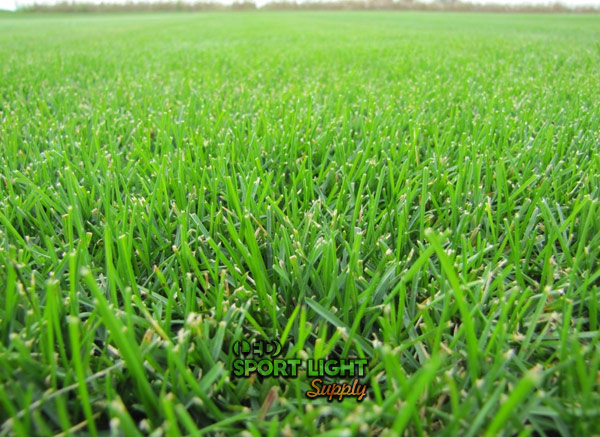
In the Northern United States, Kentucky bluegrass and Tall Fescue are the ideal choices, especially in colder climates. Kentucky bluegrass is known for its resilience and aesthetic appeal. Some varieties, such as Midnight Kentucky Bluegrass, feature smoother, silky blades that enhance the visual appeal of the field.
Tall Fescue is another viable option, providing good tolerance to cooler temperatures. Both types of grass may show color variations throughout the season, so refining your selection over time can help you find the best variety for your field’s specific conditions. Consider factors like blade width and texture, as some varieties may better suit your local climate than others.
Best Grass Seed for Warm-Weather Regions
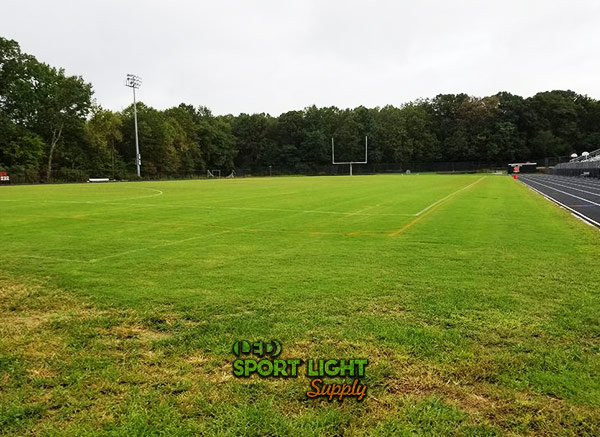
For warmer climates in the United States, Bermuda grass stands out as an excellent choice. It is highly resilient and can withstand damage, recovering quickly with proper watering. Bermuda grass is known for its drought tolerance, making it ideal for hot summer days. Its thin leaf blades minimize moisture loss compared to wider blade grasses.
Bermuda grass is both rhizomatic and stoloniferous, meaning it can spread through underground rhizomes and above-ground stolons, forming a dense, attractive turf. To ensure a robust field, apply nitrogen regularly during the hot months—especially in July. It’s important to establish a thick Bermuda lawn before winter, as the first season is critical for long-lasting, healthy turf. Typically, overseeding with ryegrass is unnecessary for Bermuda grass fields.
Why Choose Specific Grass Blends or Species for Soccer Fields?
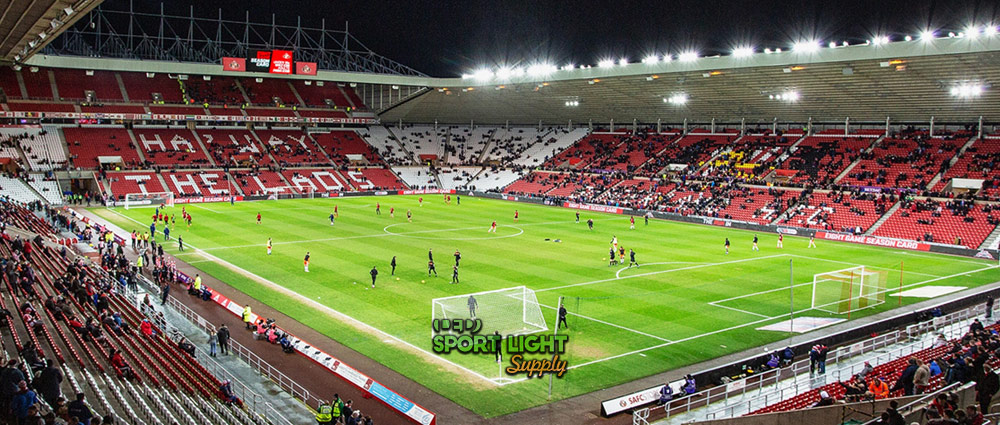
Advantages of Natural Grass
Natural grass remains the preferred choice for soccer fields globally due to its numerous benefits. Typically, natural grass can endure from six months to several years, depending on the quality of the seed and maintenance practices.
One of the key advantages of professional grass species and blends is their resistance to heavy use. Soccer is a dynamic sport involving rapid movements, such as counter-attacks and quick tactical shifts, which place significant stress on the playing surface. Players frequently engage in intense actions like diving or gathering during corner kicks, making it essential for the turf to withstand substantial wear and tear.
Natural grass provides superior shock absorption compared to artificial surfaces, balancing stiffness and elasticity to help prevent injuries. Additionally, natural grass tends to maintain a cooler temperature than artificial turf, enhancing player comfort during matches.
Alternative Grass Species for Soccer Fields
Tall Fescue
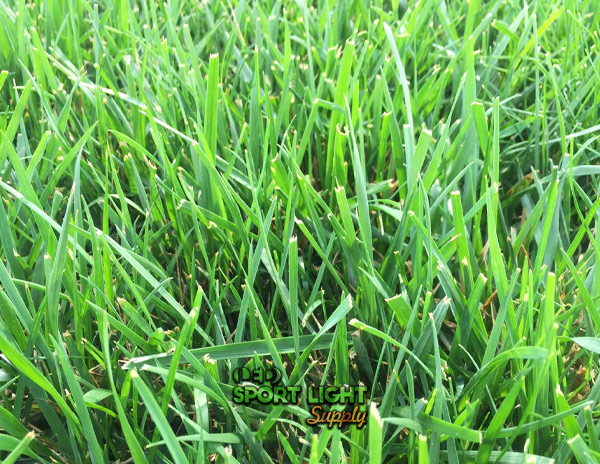
Tall Fescue is a viable option for transitional zones and regions with variable rainfall. As the name suggests, Tall Fescue grows taller than many other grass types and remains green in warm conditions. It is also relatively drought-tolerant, capable of withstanding up to two weeks without irrigation.
However, Tall Fescue has a tendency to clump rather than spread evenly, which can lead to uneven coverage on the field. This characteristic makes it less compatible with other species like Kentucky bluegrass. While it might not be the best choice for major league soccer stadiums, Tall Fescue can still be used effectively as an overseeding option to enhance field density in other soccer venues.
Perennial Ryegrass
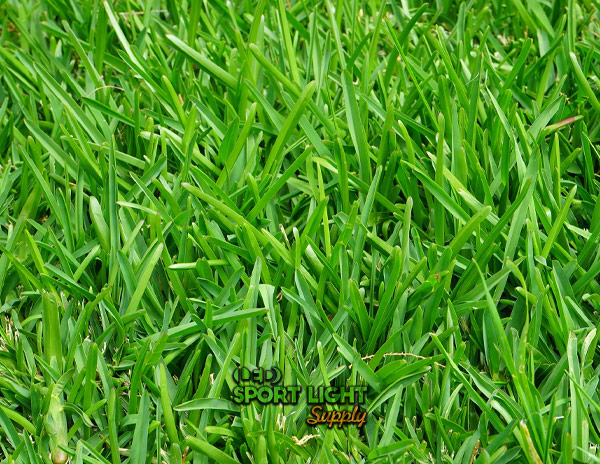
Perennial Ryegrass is another excellent choice for soccer fields, particularly if you prefer a well-manicured appearance. This grass can be cut to a height of around 20 mm, providing a pristine look. However, it grows back quickly, requiring regular mowing to maintain its short length.
Both Tall Fescue and Perennial Ryegrass offer unique advantages depending on the specific needs and conditions of your soccer field. Choosing the right grass species or blend ensures that the playing surface remains durable, safe, and visually appealing for players and spectators alike.
Before Seeding a Football Field
Soil Preparation and Compaction
To ensure a high-quality football field, it’s crucial to employ effective seeding strategies. Start by compacting the soil with heavy equipment to create a solid foundation. In American football, the field endures intense physical activity, with players frequently making forceful movements and hard stomps. Proper soil compaction helps prevent issues such as uneven surfaces and compaction-related injuries, which can affect both player safety and game accuracy.
Soil Tillage and Nutrient Management
Prior to seeding, till the football field with high-quality manure to enhance soil fertility. Conduct a soil test to determine the existing nutrient levels and identify any deficiencies. The testing process generally involves:
- Taking a soil sample
- Sending the sample to a laboratory
- Receiving and analyzing the results
Soil test kits are also available for DIY testing, which can help you monitor and adjust soil nutrients as needed throughout the seasons. Based on the results, amend the soil with the necessary nutrients to support optimal grass growth.
Regular Maintenance
To maintain the health and appearance of the field, incorporate regular overseeding and aeration into your maintenance routine. This practice helps address wear and tear and prevents unrepairable damage. Develop a maintenance schedule tailored to the specific grass seed varieties used, ensuring that the field remains in top condition throughout the season.
Selecting the Best Grass Seeds for Football Fields
Recommended Grass Seed Blends
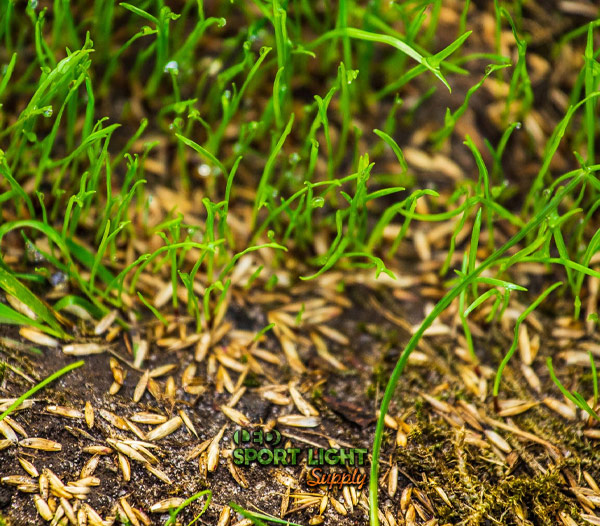
For football stadiums, a blend of 80% Kentucky bluegrass and 20% perennial ryegrass is highly effective. This combination not only provides an aesthetically pleasing appearance but also offers excellent durability for high-traffic areas. Kentucky bluegrass is known for its lush, green appearance and resilience, while perennial ryegrass germinates quickly and establishes rapidly.
Checking Sod Quality
When selecting grass seed, always check the sod tag on the seed bag to ensure you’re getting high-quality seed. Sod quality refers to the thoroughness with which the seed has been processed to remove weeds and ensure purity. Look for information on the seed label, including the percentage of pure seeds and the germination rate. Kentucky bluegrass seeds typically have a germination percentage of 85% or higher.
Seeding and Maintenance
Both Kentucky bluegrass and perennial ryegrass can be mowed to a low height, which helps maintain a smooth playing surface. If you are seeding during the warm season, it’s beneficial to rake any hard spots to help bury the seed slightly and cover them with a thin layer of soil.
If using a seed blend, consider applying granular humic acid at the end of the seeding process. Humic acid enhances soil ecology by improving nutrient availability and uptake. It helps grass roots absorb essential micronutrients more effectively than traditional fertilizers, supporting robust growth and better overall health of the football field.
Suitability of Bermuda Grass for NFL Field Painting
Bermuda Grass and Field Painting
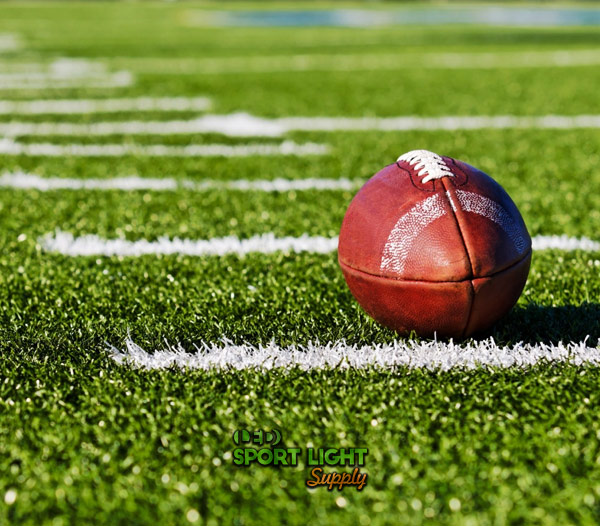
Bermuda grass, known for its rapid growth, can indeed be suitable for NFL fields, especially if you plan your field painting carefully. Due to its vigorous growth, it’s advisable to apply field logos and markings just days before a game or event to ensure they remain visible and clear. However, in many NFL stadiums, a combination of artificial and natural grass is used, which may alleviate some concerns related to painting and maintenance.
Grass Quality and Athlete Comfort
The key to a successful NFL field is ensuring that the grass provides optimal playing conditions for top athletes. Bermuda grass can be an excellent choice as long as it maintains the right balance between comfort and safety. The playing surface should neither be too hard— which can be abrasive and lead to injuries—nor too soft— which can be tiring and impact performance. Proper maintenance ensures that Bermuda grass remains in the best condition to support high-level play.
Maintenance and Care
To keep Bermuda grass in top shape, plan a thorough maintenance schedule:
| Task | Description |
|---|---|
| Scalping | In early spring, around April, scalp the field to a lower height to prepare the grass for aeration and promote thicker, greener growth throughout the summer. |
| Aeration | Early aeration helps maintain a healthy root system and enhances grass resilience. |
| Fertilization | Apply suitable fertilizers with a 4-1-2 NPK ratio during spring and early summer. This feeding schedule helps prevent weeds and diseases, contributing to a lush, green field. |
NFL Stadiums Using Bermuda Grass
Several NFL stadiums utilize Bermuda grass due to its durability and aesthetic appeal:
- Allegiant Stadium
- Arrowhead Stadium
- FedExField
- Levi’s Stadium
- M&T Bank Stadium
- Nissan Stadium
- Raymond James Stadium
- State Farm Stadium
- TIAA Bank Field
When to Use Perennial Ryegrass in a Football Stadium
Ideal Situations for Perennial Ryegrass
Perennial ryegrass is particularly useful for quickly establishing cover in football stadiums. Its rapid germination, typically within 7 to 10 days, makes it an excellent choice for filling in bare spots and restoring the playing surface. Given its quick establishment, perennial ryegrass can be used effectively to address areas that need immediate coverage.
However, perennial ryegrass is not suitable for covering an entire football field due to its susceptibility to various diseases. It is best used in areas that are at least 500 feet above sea level, where it can thrive under less humid conditions. Additionally, perennial ryegrass can be used to overseed areas of Bermuda grass or Kentucky bluegrass to help the field recover from heavy traffic and wear.
Maintenance and Reseeding
Perennial ryegrass has a tendency to diminish over time, especially under heavy use. Therefore, it is important to reseed the field with perennial ryegrass at the end of the sports season to ensure continued coverage and recovery. Regular overseeding helps maintain the quality of the playing surface throughout the year.
Natural Grass vs. Artificial Turf for Football
Benefits of Natural Grass
Natural grass is generally considered superior to artificial turf for football. Over time, artificial turf has been associated with various injuries and issues, despite its initial appeal due to lower maintenance requirements. Players often prefer natural grass because it provides a more forgiving and less abrasive surface, which is crucial for preventing injuries.
Natural grass does require careful planning and maintenance. Regular mowing, watering, and fertilization are essential to keep the grass in optimal condition. Additionally, a well-maintained natural grass field can avoid problems like freezing in winter, which can be a concern with artificial surfaces.
Grass Selection and Maintenance
In regions with high traffic, such as the Southern United States, Bermuda grass is a popular choice for athletic fields due to its durability. To assess the grass’s traffic tolerance, simulations can be conducted to replicate the stress experienced during games. For instance, two passes per week with a traffic simulator can approximate the wear and tear of one NFL game between the hash marks and the 40-yard line.
Consideration should also be given to the number of games hosted per week, as this will impact the frequency of nitrogen application needed to keep the field lush and green. Proper management ensures that natural grass fields remain in excellent condition and support high-quality play throughout the season.
Conclusion
Choosing the right grass seed and maintenance strategy is essential for ensuring optimal conditions and durability of football fields. Perennial ryegrass offers rapid coverage and recovery but should be used carefully due to its disease susceptibility and tendency to diminish over time. Despite its higher maintenance needs, natural grass remains the preferred choice for football fields due to its ability to provide a safer, more forgiving surface that enhances player performance and reduces injury risk. Regular mowing, watering, and fertilization are crucial to maintaining a high-quality, resilient playing surface. Whether using Bermuda grass in warmer regions or Kentucky bluegrass in cooler areas, careful selection and ongoing maintenance are key to achieving a durable, aesthetically pleasing football field that supports excellent play throughout the season.
